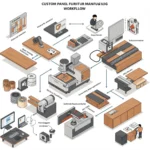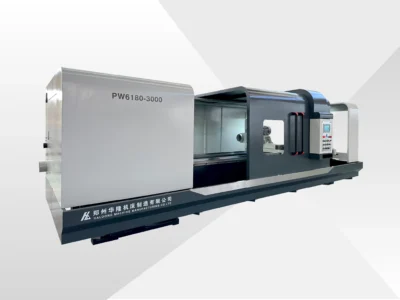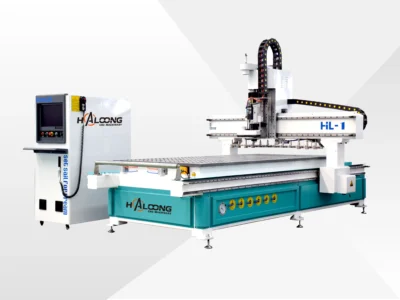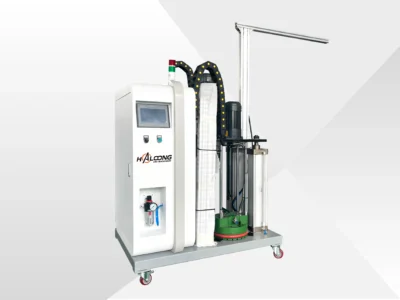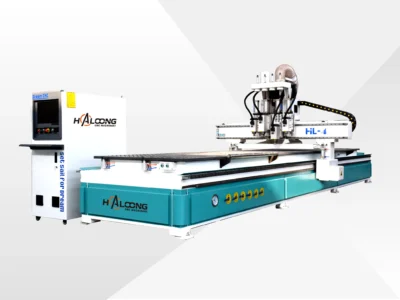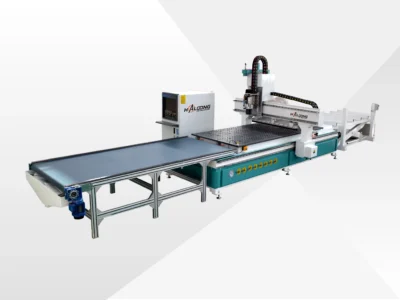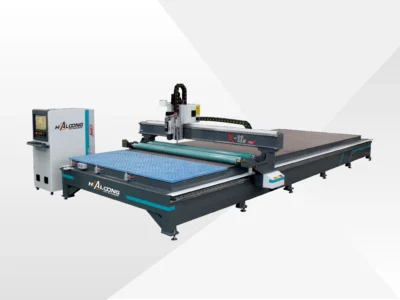
Essential Care Tips to Maximize Your CNC Spindle’s Performance & Lifespan | HALOONG CNC Spindle Guide Part 3

The spindle is arguably one of the most critical—and often expensive—components of your CNC router. Its health directly impacts cut quality, precision, and overall machine uptime. Implementing a consistent maintenance routine is not just recommended; it’s essential for protecting your investment and ensuring reliable operation. This guide, drawing from best practices and HALOONG CNC expertise, covers the key maintenance steps for all common spindle types.
Safety First! Always ensure the machine is powered off and follow proper lockout/tagout procedures before performing any maintenance tasks.
Universal Maintenance Practices (All Spindle Types)
- Stable Power Foundation: Spindles thrive on clean, stable power. Voltage sags, spikes, or instability can lead to errors, overheating, or even permanent damage. Verify your shop’s power supply meets the machine’s requirements. (HALOONG CNC often equips machines with dry type transformers to mitigate voltage fluctuations.)
- Immaculate Tool Interface (CRITICAL): This is non-negotiable. Every single time you change a tool:
- Thoroughly blow out the spindle’s internal taper with clean, dry compressed air.
- Clean the collet (inside and out).
- Clean the collet nut threads.
- Clean the tool holder taper (for ATC systems).
- Why? Even tiny amounts of dust or debris create runout (tool wobble), leading to poor surface finish, reduced tool life, increased vibration, and potential damage to the spindle bearings and tool holder. Regularly inspect collets for wear, deformation, or scoring, and replace them proactively. Always use the correctly sized collet for the tool shank diameter and tighten to the recommended torque – over-tightening can damage the collet and spindle threads.
- Dial-In Speeds and Feeds: Using the manufacturer-recommended spindle speed (RPM) and cutting feed rate for your material, tool, and spindle capabilities is crucial. Pushing too hard risks breaking tools or damaging the workpiece. Running too fast with too slow a feed rate generates excessive heat, causing burns (especially in wood/plastics), melting (plastics), rapid tool dulling, or even fires.
- Implement a Warm-Up Cycle: Before putting the spindle under load, especially high-speed spindles, run a brief warm-up program. Start at a lower RPM (e.g., 5,000 RPM) for 2-5 minutes, then incrementally increase the speed. This allows bearings to reach optimal temperature and ensures lubricant is properly distributed, significantly reducing wear and tear.
- Sensory Checks: Be attuned to your machine. Listen for any new or unusual noises (grinding, high-pitched whine). Feel for excessive vibration or check for abnormal heat buildup on the spindle body after operation. These are often the first indicators of developing problems.
- Check Grounding: Ensure the machine frame and spindle have a solid earth ground connection for safety and to minimize potential electrical interference.
Cooling System Maintenance
Water-Cooled Spindles:
- Coolant Health: Use distilled or deionized water mixed with a quality coolant additive/corrosion inhibitor (check spindle manufacturer recommendations). Avoid plain tap water. Keep the system clean and replace coolant periodically to prevent algae growth or degradation.
- Antifreeze: In cold environments, use compatible antifreeze mixed correctly to prevent freezing damage during downtime.
- Flow & Pump: Regularly verify coolant is circulating freely (no kinks, clear sight glass if present) and the pump runs smoothly.
Air-Cooled Spindles:
- Keep it Clean: Regularly blow dust and debris off the spindle’s cooling fan and heat sink fins using compressed air. Clogged fins severely restrict airflow and cause overheating.
- Ensure Clear Airflow: Don’t allow chips or clutter to block the airflow around the spindle body or fan intake.
Pneumatic System Maintenance (ATC & Drilling Spindles)
- The DRY Air Imperative: This cannot be overstated. Moisture in the compressed air supply is poison to the precision valves and actuators in ATC and drilling mechanisms.
- Regularly drain water from filters, separators, and air tank drains.
- Adhere strictly to the maintenance schedule for replacing desiccant or filter elements in your air dryer/filtration system.
- Stable Air Pressure: Ensure consistent air pressure at the level specified by the manufacturer. Check regulators for proper function. (HALOONG CNC may utilize secondary pressure boosters on relevant machines to ensure unwavering pressure for reliable operation.)
Specific Component Care
- Drill Pack Lubrication: These geared mechanisms require periodic lubrication. Consult the manufacturer’s manual for the correct lubricant type, application points, and frequency.
Conclusion: Maintenance Pays Dividends
Investing a few minutes each day or week in proper spindle maintenance is far less costly than dealing with unexpected downtime, ruined parts, or spindle replacement. By following these guidelines, you can significantly extend the life and maintain the accuracy of this vital CNC component.
HALOONG CNC designs machines with reliability in mind and helps customers choose the right spindle configuration for their needs. Consistent care ensures you get the most out of that configuration.
More Posts
Get A Free Quote
Related Products
HALOONG CNC Cylindrical Shaft Polishing Machine
Dual Station Table Linear ATC CNC Wood Router: Automatic Tool Changer Wood CNC for Furniture Making
Why the HALOONG 12-Tool ATC CNC Wood Router Stands Out
The HALOONG 12-Tool ATC CNC Wood Router is a high-performance wood CNC machine built for exceptional efficiency and flexibility. Its automatic tool changer (ATC) switches between 12 tools in under 5 seconds, drastically reducing downtime and boosting output. Whether you’re cutting MDF, carving solid wood, or crafting intricate designs, this CNC wood router handles it all with ease. For even greater productivity, consider our optional dual-table configuration, which allows for near-continuous operation and significantly increases throughput for demanding production schedules.
Key Features of This CNC Wood Router
Here’s what makes this wood CNC a must-have:
Ultra-Fast Tool Switching
- 12-tool linear magazine: Holds a variety of tools, ready for instant use.
- Tool changes in under 5 seconds: The gantry-integrated design cuts travel time, keeping your production moving.
Versatile Material Processing
- Works with MDF, solid wood, OSB, PVC, acrylic, aluminum, and composite panels.
- Supports standard furniture joints (e.g., dowels and cams) and modern invisible connectors (e.g., Lamello, Peanut, Lockdowel).
- Perfect for cabinets, wardrobes, doors, and artistic carvings.
Customizable Worktable Options
- Options like 4'x8' (1220x2440 mm), 4'x9' (1220x2800 mm), or custom sizes available for single-table models.
- Maximize your output with our optional dual-table configuration, allowing for continuous loading and unloading on separate work zones.
- Upgraded vacuum table locks materials securely for flawless results on both single and dual-table setups.
Effortless Operation
- User-friendly controls with a clear display, network, and USB connectivity.
- Simplified design means even beginners can master it quickly. The dual-table operation is also intuitively managed through the advanced control system.
Built to Last with Precision
- Heavy-duty steel frame and high-precision gearbox for durability.
- Servo-driven system ensures smooth, accurate cuts every time. The robust construction ensures stability even during continuous operation on the dual-table model.
Cleaner, Safer Workspace
- Integrated dust collection and air-blow system keeps debris in check.
- Ideal for continuous, high-output runs without mess, making it perfect for the increased production demands of the dual-table system.
Top-Notch Support
- Free technical support, lifetime service, and remote assistance included.
PUR Glue Machine Kit For Edge Bander
Four-Spindle Dual-Station CNC Wood Router for Panel Furniture Manufactured
Maximize your panel furniture manufacturing throughput with the HALOONG Four-Spindle Dual-Station CNC Router. Expanding on the reliability of our single-station four-spindle CNC wood cutting machines, this dual-station system provides a substantial increase in production efficiency. It's designed for continuous operation, minimizing downtime and maximizing output through its smart workflow.
The clever dual-station workbench facilitates seamless alternating work cycles. While one station is engaged in machining, the operator can efficiently prepare the next batch of materials on the adjacent station. Upon completion of the first cycle, the machine instantly transitions to the pre-loaded second station. This continuous processing approach ensures no wasted time, making it a key asset for high-volume furniture production.


